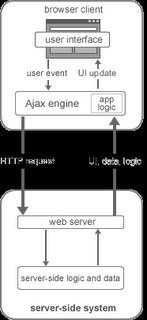I still remember being awestruck and excited with all things "computers" when it was introduced in my secondary school (Sekolah Menengah Seri Garing, Rawang... also fondly called SEGAR). I was 14 then... waiting for school to end... and then quickly run to the lab and book a seat. Manjit Singh was my instructor then, cool dude. It was an IBM pc, I think. That started my passion with all things IT. I begged my cousin to lend his Atari, it ended up being mine. I also loved the Amiga machines. When it came... I took a bus to Imbi plaza and gawked at its interface... cool colours and interesting OS.
Which brings us to Apple!!! Apple PC to me ... was like the BMW of computers then (maybe even now)... always one step ahead of everyone else in terms of ideas and innovation. Steve Jobs and Steve Wozniak started Apple on April Fool's Day 1976, its already 30 years now. There has been a lot of ups and downs for Apple. Throughout, I have tested it at friends places, computer labs and even at computer shops. To be honest, I never really liked it... either it was too expensive, has too many niche software, ugly casing and caters for a cult group of fans. All its cool ideas were improved by others... especially that big copy-cat Bill Gates. In campus... Windows was the 'in-thing', it had a cool interface... many people were excited they can play VCDs and computer games... but to me... thats just an Apple clone lah dude. However.. unlike Apple... Microsoft learns fast from their mistakes. Since then, Windows has improved so much leaving all their competitors far... far... behind.
My interest as a kid... were just games and BASIC programming. Even now, Apple seems to have this special group of users... iPod and all... something I would never buy. No.. don't get me wrong... this time I can afford to get one, love MP3s and all that cool downloads. But its a gadget not worth having... doesn't fit into my lifestyle I suppose. I wasn't into that Sony Walkman thing too... after a while you get bored. I rather spend that money on a Playstation.
Now we hear that Apple will be using Windows as its O/S. Huh?? It does not make sense. All through these years the Apple O/S has always stuck close to UNIX 'roots'... champions of a cause. Moving into Windows is just gonna proof that something is wrong. OK, I dun like Windows too... but all this domination and sharing is just leaving me more confused ;-)



